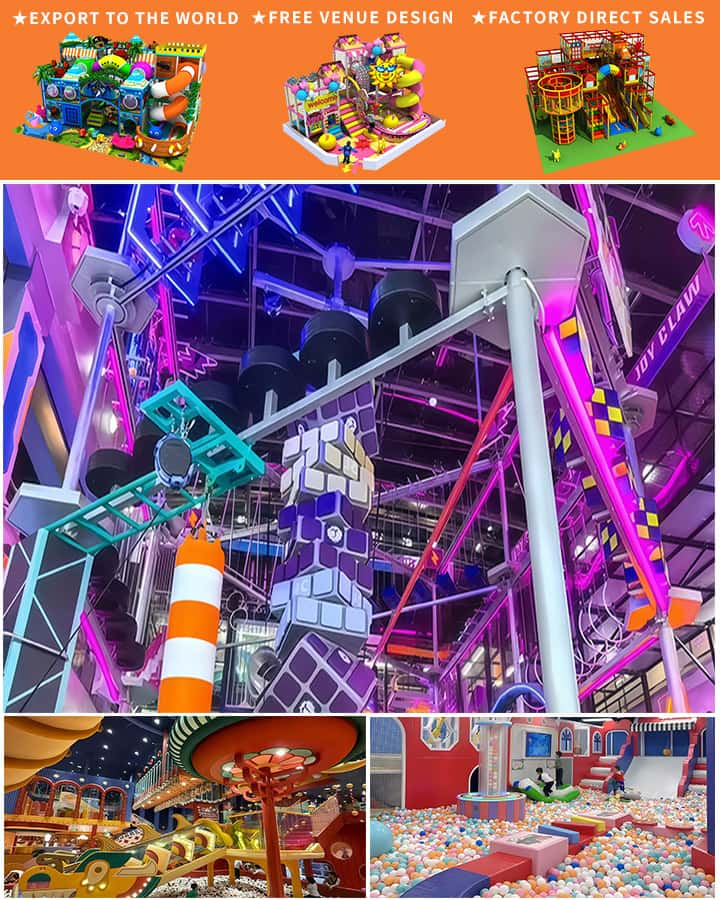Creating an indoor playground is a fantastic way to provide children with a safe and engaging environment for fun and physical activity. However, one of the most crucial considerations when planning an indoor playground is the cost of the equipment. This article delves into the factors that influence the cost of indoor playground equipment, offering insights to help you budget effectively for your project.
Factors Influencing the Cost
1. Type of Equipment: The range of indoor playground equipment is vast, from basic climbing structures and slides to elaborate multi-level play areas with interactive elements. Simple pieces like small slides or tunnels are generally more affordable, while complex installations such as indoor trampolines, rock walls, or themed play areas can be significantly more expensive.
2. Size and Scale: The size of the indoor playground and the quantity of equipment needed directly impact the overall cost. Larger spaces require more equipment to fill the area adequately, increasing the total expenditure. Additionally, custom designs tailored to specific space requirements may come with higher costs due to the complexity of installation and the need for specialized components.
3. Material Quality:
 The quality of materials used in indoor playground equipment varies widely, affecting both the upfront cost and longevity. Higher-quality materials like durable plastics, stainless steel, and non-toxic finishes tend to be more expensive but offer better safety, durability, and aesthetic appeal. Opting for cheaper materials might reduce initial costs but could lead to increased maintenance and replacement expenses over time.
The quality of materials used in indoor playground equipment varies widely, affecting both the upfront cost and longevity. Higher-quality materials like durable plastics, stainless steel, and non-toxic finishes tend to be more expensive but offer better safety, durability, and aesthetic appeal. Opting for cheaper materials might reduce initial costs but could lead to increased maintenance and replacement expenses over time.
4. Brand Reputation: Established brands in the indoor playground equipment industry often charge a premium for their products due to factors like enhanced safety standards, comprehensive warranties, and superior customer support. While choosing less well-known brands can be cost-effective, it’s essential to balance this against potential compromises in quality and safety.
5. Customization and Features: Customized equipment that includes unique themes, interactive features, or educational elements can significantly elevate the cost. These personalized touches not only enhance the visual appeal but also create a distinctive experience for children and caregivers alike. However, they require additional design effort and resources, which contribute to higher prices.
Budgeting Tips
1. Prioritize Essentials: Focus on purchasing core equipment that offers versatile play options and can accommodate various age groups. Climbing frames, ball pits, and multi-functional play structures are excellent starting points.
2. Research Multiple Vendors: Obtain quotes from multiple suppliers to compare prices and negotiate better deals. Don’t forget to check reviews and testimonials to ensure you’re getting value for your money without compromising on quality.
3. Consider Long-Term Benefits: Investing in high-quality, durable equipment might have higher upfront costs but can save money in the long run by reducing maintenance and replacement expenses.
4. Plan for Installation and Maintenance: Factor in additional costs for professional installation and ongoing maintenance. Proper installation ensures safety and longevity, while regular maintenance keeps the equipment in optimal condition.
Conclusion
The cost of indoor playground equipment can vary significantly based on several factors, including the type and quality of equipment, customization options, and supplier choices. By understanding these variables and planning accordingly, you can create a captivating and safe indoor playground that offers great value while staying within your budget. Whether you’re setting up a commercial play center or enhancing a community space, careful consideration of these elements will help you make informed decisions and achieve a successful outcome.




